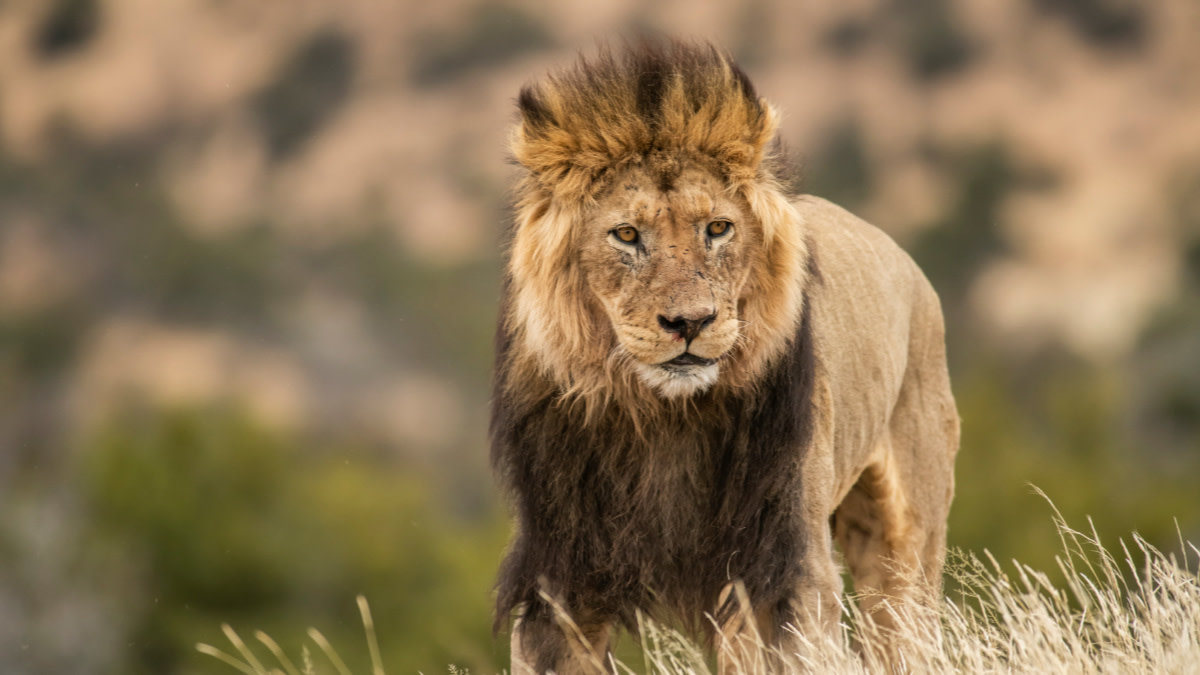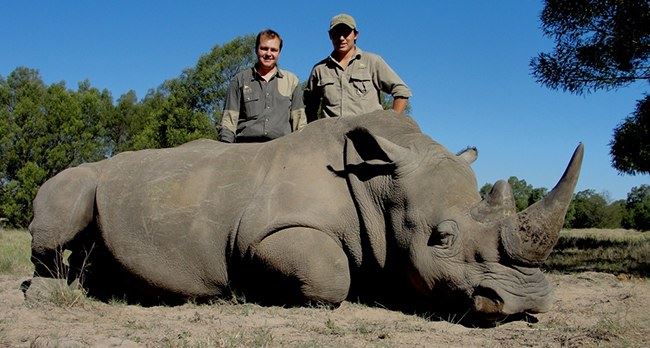Ego, Money, Smiles and Outrage: The Mainstream Media’s Trophy Hunting Doctrine

Back in 2013, outdoors TV host and personality Melissa Bachman legally killed a lion in South Africa during a guided hunt in the Maroi Conservancy. For her, there was a big reason to celebrate. She shared photos on social media of her sitting behind the dead lion along with the caption: “An incredible day hunting in South Africa! Stalked inside 60 yards on this beautiful male lion. What a hunt!”
Shortly after she posted the image, it was picked up by several prominent anti-hunting and animal rights social media accounts and began to spark outrage across the Internet. The fervor inspired Cape Town, South Africa resident Elan Burman to start a change.org petition pushing for Bachman to be banned from the country. The petition quickly reached more than 15,000 signatures and the story became national news.
ABC News, among other mainstream outlets, soon ignited the anti-hunting narrative with headlines like “Smiling Hunter’s Dead Lion Photo Highlights Big Cats’ Plight.” ABC TV even ran a news segment that described the image like this: “The bright smile of Melissa Bachman stands in stunning contrast to the carcass of the King of the Jungle.”
The outrage, the smile and the photo would lead the story. Death threats for Bachman poured in as the debate raged on about the moral, ethical and practical elements of her hunt.
By the time advocates of hunting lions in Africa stepped up, the anger was already at a fever pitch. Even the ABC article quoted and sourced supporters of trophy hunting and the Maroi Conservancy, which stood by Bachman’s hunt. The problem was that it was all buried beneath the sensational headline and even more absurd TV news report.
There certainly were fair arguments against what Bachman did, but she deserved a fair shake and didn’t get one in the mainstream press.

Fast forward almost six years and many controversies later—see Walter Palmer, Kendall Jones, Corey Knowlton and others—and we find ourselves in yet another similar situation. There has been an almost constant stream of “trophy hunter kills animal and…” stories, fatiguing many in the hunting world.
This time, the hunter is Dallas banking executive Bryan Kinsel Harlan and he paid $110,000 to hunt and kill an Astore markhor in Pakistan. The CNN headline goes like this: “Trophy hunter ‘pays $110k’ to kill and pose with rare mountain goat.”
The same CNN story describes “fury on social media” without giving any context, quotes PETA’s Twitter account and generalizes that “some Pakistanis called for a ban on hunting such animals.” The last line states that there are around 5,700 markhor globally but fails to also mention that the population was reported at around 2,500 in 2011.
The story does nothing to examine the potential benefits or harm of the hunt and everything to emphasize the photo, the outrage and the money. And it’s not like CNN or any other major news outlet is on the markhor beat regularly.
Meanwhile, NPR ran a headline that read “A U.S. Hunter Paid $110,000 To Shoot A Pakistani Goat.” The piece elevated Shafqat Hussain, an anthropology professor at Trinity College and a National Geographic emerging explorer, as an important figure with even more important insights.
“From 1993 to 1999 he [Hussain] worked for the trophy hunting program that issues permits to 12 people a year to hunt a markhor,” the article states. “He explained to NPR why he believes this enterprise benefits both the species and the local population—although he does admit there are potential pitfalls.”
While NPR presents only one man’s opinion, it’s a legitimate attempt to add some important color to an altogether black and white picture.
As mainstream news organizations lob vitriol back and forth about the nature of truth in reporting, trophy hunting remains one of those subjects that is easy to translate into the fake news they so often decry.
Americans love the anecdotal. Modern, digital-friendly outlets love to turn compelling happenings like these into reasons to be outraged or at least reasons to pay attention to the outrage that’s already surfaced.
That’s precisely how these so-called scandals make their way into the national conversation. They play into a long-held narrative about the motivations of the modern sport hunter and what it means to take an animal’s life. It’s almost always an image of an exotic dead animal and smiling hunter that triggers these stories. The photos are plucked from hundreds of similar shots and seem to be elevated based on exactly how jarring they might be to the non-hunting public. Is the animal endangered or rare? Does it have a name? Has the animal ever been a cartoon?
From there the headlines damn near write themselves. Whether by apathy, lack of integrity or the inevitable pressure to convert news into clicks, some in the media have created a doctrine for reporting on these individual trophy kills.

It’s fair to ask: What is the point of reporting these stories in this way? To highlight the plight of these animals? Maybe they could make a difference if they would ever report on these animals outside the context of somebody shooting one.
In both Harlan and Bachman’s cases the inference is that the killing and posing of the animal is a key driver of the writing. News outlets in both cases came very close to making a moral judgement against each hunter in the headline, before presenting any of the facts at hand. This defines confirmation bias.
This particular bias seems to manifest itself in stripping these stories down to their lowest common denominator and building headlines that confirm the narrative, which happens to be a proven attention-getter.
What’s most disturbing about Harlan’s situation as compared to Bachman’s is that even though these stories ran almost six years apart and were published by different national news outlets, they both are subject to the same anti-hunting spin. This leaves very little room for the rest of the story, and in this case the “hunting creates value” argument is all but left out.
There is plenty of evidence that hunting creates value, value leads to conservation and conservation leads to the growth of wild game populations. This has been proven time and time again with backing from bodies like the International Union for Conservation of Nature.
On the other hand, there are plenty of reasons to not be sold on community-based conservancies that rely on the incredibly high value of individual tags as a sustainable model. Countries that obtain most of their conservation funding from a small group of wealthy, international hunters certainly are taking a risk by gambling the future of these species on the assumption that the demand for those tags and/or animals will continue. . The model also stands in stark contrast to our North American Model of Wildlife Conservation, in which the animals belong to the people and are held in trust by the states. All citizens in the U.S. are afforded the privilege to pay into a system that allows for regulated hunting. It’s a democratic approach. The trophy hunting model as it’s currently constituted is a decidedly aristocratic one.
Compare that complicated back and forth to the compelling tale of a rich, globetrotting American paying a large sum of money to kill an animal, and it becomes the path of least resistance to simplify and sensationalize.

Believing that American journalists or their readers understand wildlife management in far-off lands or the perspectives of deeply foreign communities and cultures is the definition of hubris. Who among us can claim they know what’s best for a rural Pakistani village?
It’s a debate that is happening on an international stage. Given the American monetary influence, it’s important we all understand the impacts of trophy value. Balanced reporting is out there, and we can almost always count on NPR to bring some journalistic integrity to the table. The danger is in the imbalance created by the mainstream media’s willingness to pick teams and err on the side of spin designed to grab clicks. This is as true for wildlife management as it is for political perspective.
Though we should always turn a critical eye to our hunting community and try to improve public perception, the main story here is no longer whether these individual cases of trophy hunting are moral or immoral, productive or counterproductive. What we should be worried most about is the damning impact coverage of modern hunting scandals has on the national conversation.
In 1906, President Theodore Roosevelt helped to coin the term “Muckraker” describing journalists during the Progressive era that sought to combat and expose corruption and unmitigated bias in our society.
“The effort to make financial or political profit out of the destruction of character can only result in calamity,” he said at the time.
Here we are in the middle of era in which certain hunters are being denied the benefit of the doubt based on imagery and emotion. Their character is being assassinated in the name of profit. These hunters deserve the same fair judgement every American is afforded, and the non-hunting public deserves a chance to make an educated decision.
Our reaction to all this at MeatEater was to create the Hunting Scandal Assessment Chart to help us better consider these scandals, the coverage and their impact on our world. Download it, print it out and figure out exactly where you and your friends stand on these scandals.





Conversation